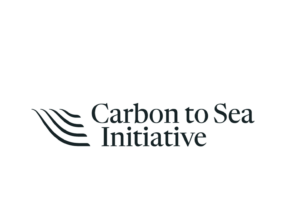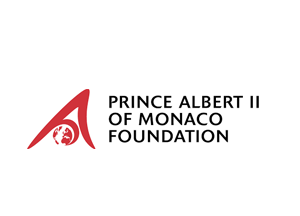
Request for Proposals: Effect of Ocean Alkalinity Enhancement on Commercially and Culturally Important Species
In a joint effort, the Carbon to Sea Initiative, and the Prince Albert II of Monaco Foundation (PA2F), are soliciting proposals to study the impact of ocean alkalinity enhancement (OAE) on commercially and culturally valued marine species.
The aim of this funding opportunity is to understand the potential risks and co-benefits of OAE deployment strategies in preparation for open-system field experiments.
In the framework of this partnership, Carbon to Sea and PA2F intend to fund two 24-month awards of $300,000 USD.
Applications are due Friday, January 16, 2026.
Context
In addition to drastically cutting our greenhouse gas emissions, meeting the ambitious climate targets of limiting warming to below 2°C necessitates the removal of multibillions of tons of CO2 from the atmosphere. While current carbon dioxide removal efforts have predominantly focused on land-based solutions, scientists are exploring ocean-based approaches, which are still in the early stages of development. Ocean Alkalinity Enhancement (OAE) is emerging as a promising method that may increase the ocean’s ability to safely store carbon without increasing ocean acidification.
To date, scientific research on the safety of OAE has largely focused on plankton responses (e.g., Biogeosciences Special Issue on Environmental Impacts of OAE). Yet, much of the societal interests around OAE center on the potential impacts on culturally and economically important marine species, including invertebrates and fish. The current gap between available scientific knowledge and societal priorities hinders inclusive risk-benefit assessments and effective decision-making. This funding opportunity aims to close that gap by advancing knowledge of OAE impacts on valued species from higher trophic levels.
Scope of Work
Projects should investigate impacts of OAE on valued species and have relevance to societal priorities. The identification of local priorities may be included as part of the project scope and budget. Partnership with non-academic communities is encouraged but not required (e.g., Indigenous communities, community leaders, fishing and aquaculture industry).
Projects must adhere to the following requirements:
- Target species must have significant commercial and/or cultural value. Target species, communities, and life stages may inhabit any part of the water column in nearshore or offshore habitats. While species with commercial and cultural value is a priority, species of high ecological value, such as keystone species, may also be considered.
- Experimental research must be hypothesis-driven and target biological and/or ecological responses. Hypotheses must be rooted in scientific findings and advance knowledge applicable to real-world OAE operations. Investigations may include, but are not limited to, physiological processes, performance curves, ecological processes and interactions, biological co-benefits (i.e., mitigation of demonstrated biological or ecological harm of ocean acidification). Projects may include energetics, ecosystem modeling, or parameterization as an additional component, if relevant.
- Any OAE feedstock is eligible for testing (e.g., NaOH, MgO, CaO, olivine, other particulate sources) so long as the feedstock is relevant to approaches currently under development. Experiments must prioritize investigations of changes in carbonate chemistry caused by OAE, with secondary consideration of feedstock-specific interactions (e.g., impact of trace elements, particles).
- Experiment treatments must include, but do not need to be limited to, exposures applicable to real-world deployment strategies and the alkalinity changes that they are anticipated to achieve. For example, ocean alkalinity may change by a few hundred μmol kg−1 at most on a regional scale, and higher, shorter exposures may be relevant at local scales. This includes experimental designs that test short-term exposures, long-term exposures, recovery effects, among others.
Projects should align with best practices in the OAE and mCDR field. Examples include:
- Aspen Institute’s Code of Conduct for mCDR Research
- AGU’s Ethical Framework for Climate Intervention
- Carbon to Sea’s OAE Data Management Protocol
- State of the Planet’s Guide to Best Practices in Ocean Alkalinity Enhancement Research
- United Nations’ Free, Prior and Informed Consent Manual
- National Wildlife Federation’s Informing mCDR Projects: Best Practices Guidance for Tribal and Indigenous Engagement
- University of Delaware’s Developing Best Practices for Community Engagement in Marine Carbon Dioxide Removal (mCDR) Research
Out of Scope:
- Experiments focused only on phytoplankton
- Standard toxicity tests
Required Deliverables:
- Open-access publication of the data, within 6 months of data collection. Data management must follow guidelines of the OAE Guide to Best Practices (Jiang et al., 2023) and Carbon to Sea’s OAE Data Management Protocol.
- Open-access publication(s) of the study findings.
Budget
The budget is capped at $300,000 USD per project, including indirect costs (up to 5%). The budget may be used for personnel, research and travel expenses, and community engagement activities, including compensation for non-academic partners.
Team Criteria
- The principal investigator must have a PhD and be affiliated with an academic research institution or a scientific non-profit, anywhere in the world.
- Non-academic partners are encouraged but not required. Non-academic partners should be compensated and acknowledged on research products as appropriate to the engagement.
- Collaboration with OAE companies is permitted, but not required. Project funds cannot be used to support commercial OAE company personnel or activities.
Application Process
Proposals must be submitted via email attachment as a single PDF to info@carbontosea.org by Friday, January 16, 2026 at 23:59 Eastern Time, using the Proposal Template provided here. The proposals will undergo scientific peer-review and Carbon to Sea and PA2F will jointly make the final award decision on both awards.
Timeline
- November 3, 2025: Submissions open
- January 16, 2026: Submission deadline
- February 2026: Scientific peer-review
- March 1, 2026: Award decision
- May 1, 2026: Project Start Date

